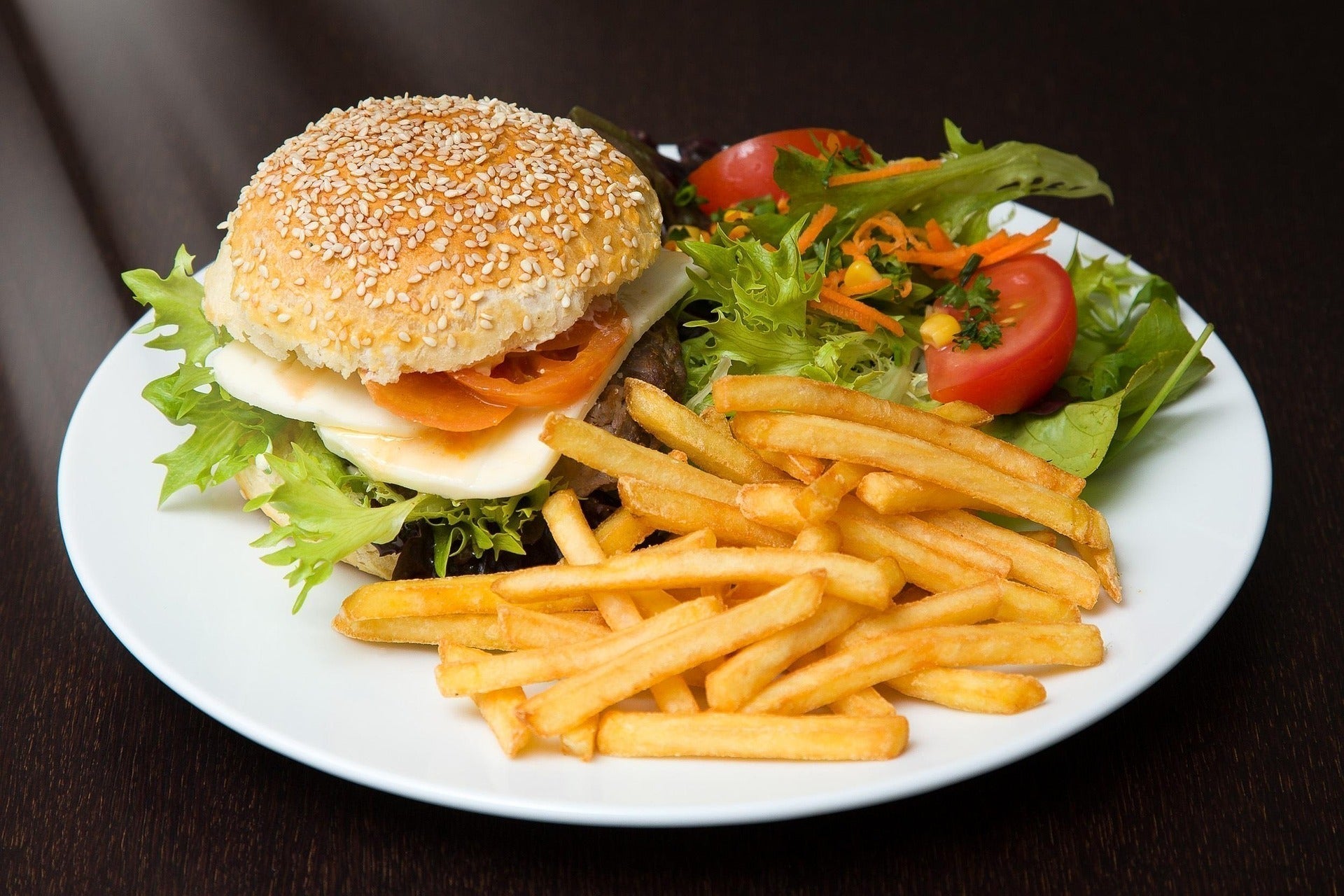Many people assume that vegetarians eat lots of vegetables. After all, it's the basis of the name of their diet. Veggies or vegetation is literally right in the name for vegetarians. But here's the trick: many vegetarians and vegans don't actually eat enough vegetables to get the full benefits of them.
How do I know that? Well, it's in the blood. You can actually see if someone is eating enough vegetables by the levels of carotenoids in their blood. Carotenoids are powerful antioxidants and they don't lie. If you haven't been eating vegetables, they're not in your blood. Even dedicated plant eaters like vegans might be falling short.
We'll look briefly at why carotenoid levels matter for long-term health and what we have found in a large study looking at vegetarian and vegan blood markers. And then why diets like the Hallelujah Diet might be the key to getting it right. So let's dive in.
Carotenoids: Your Blood's Window into Veggie Intake (and Health Risks)
You may not be familiar with the word carotenoid, but you've heard of beta-carotene and lycopene and other compounds like lutein and zeaxanthin. These are the compounds that give carrots and pumpkins their orange hue. Tomatoes get their red glow from lycopene, as does watermelon. And behind all that chlorophyll in leafy greens like spinach and kale, are the dark yellow from lutein and zeaxanthin. Your body doesn't make the carotenoids. You have to eat them. They come from vegetables and some fruits.
These colors aren't just pretty—they're linked to lower risks of chronic diseases. They may be markers of all the good things in plants, not just the active compounds themselves. That's an important point here.
Researchers from the SUVIMAX study said it really bluntly in a commentary article from 2019 like this, "Tell me what your blood beta carotene level is, I will tell you what your health risk is!”. In the SUVIMAX study, they found that baseline beta-carotene levels were predictive of future disease risk. (SUVIMAX study link)
For example, in men, the incidence of cancer was 45% lower in those that had the highest levels of beta-carotene. Risk of cardiovascular disease was 43% lower, and risk of overall mortality, diabetes, and hypertension were similarly and inversely related to beta-carotene levels.
Now that was a comparison with the baseline levels. When they gave them supplements of beta-carotene pills, it didn't really work. In fact, in other trials, high-dose beta-carotene pills were actually not good for people who also smoked.
The takeaway message from this study is pretty clear: it's the whole food sources that count for carotenoids, not just taking a supplement. The beta-carotene level acted as a proxy, as a marker of a veggie-rich diet, showing that your overall intake of all the beneficial phytochemicals and nutrients in vegetables were present in your diet and in your body. And all those things together help protect you from disease.
The Carotenoid Health Index: Are You in the Protective Zone?
Several years back now, I created what I call the carotenoid health index. I published a review of it in 2011 in the journal Nutrients.
I looked at 62 studies that linked plasma carotenoid levels to overall health outcomes like cancer, diabetes, and heart disease. Then I set up cutoff points based on that research data for total carotenoid concentration in the blood that showed what levels were protective.

To get the best protection, you need to be above 4 µmol/L of total carotenoids. At this level, people were very unlikely to face chronic health challenges.
For all-cause mortality, there was a threshold effect where protection kicks in just above even the lowest cutoffs. But to get the most benefit, especially for cancer and some more challenging issues, you really had to get above the higher thresholds of 3 or 4 µmol/L.
Shockingly, over 95% of the U.S. population falls into the moderate or high-risk categories based on typical carotenoid levels. That's right—most of them have below 1 or 1.5 µmol/L levels of total carotenoid. Even globally many people are less than 2 µmol/L.
So we would say, as a population in the western world, we do not eat enough vegetables, whether you are vegetarian or omnivore. Nobody is eating enough vegetables except for just a very few. We will get to those down below.
The Adventist Health Study-2: Even Vegans Fall Way Short
Now let's take a closer look at a vegetarian population. The Adventist Health Study II is a massive cohort—over 96,000 self-identified Adventists, many of whom follow plant-based diets—but there's a range of people there, so it's a good cohort to look at this analysis. There were vegans, lacto-vegetarians, pesco-vegetarians, semi-vegetarians, and even non-vegetarians in this population of Adventists.In a 2019 analysis of blood and plasma, they looked at carotenoid levels (Full study link here).
They found the vegans had an average of 1.86 µM, with a range of 1.55 to 2.23 µM. The lacto-oval vegetarians were at 1.40, pesco vegetarians at 1.48, non-vegetarians at 1.17 and non-vegetarians at 1.19 µM
So even the vegans had levels that were too low, even though they were quite a bit higher than the non-vegetarians. But that is a very low bar. The whole cohort was not eating enough vegetables. None of them were anywhere near the 4+ µM protective threshold.
This Explains Why So Many Vegetarian Diets are Disappointing
When you look at carotenoid levels in the vegetarian groups, you start to understand why results from these vegetarian cohorts are so disappointing. It turns out they're not eating enough vegetables to get the full benefit of a diet “rich in fruits and vegetables”.
They make vegetarians all look like they're not very healthy—and those ones aren't very healthy. So the first takeaway is this: low carotenoids levels show why published vegetarian studies don't see the benefits from a vegetarian diet that actually are possible.
It isn't enough just to avoid eating meat. If that's all you do, you will still not be getting the benefits of vegetables because you're not eating the vegetables. The power of the vegetarian diet is in the vegetables.
You actually do need to eat a lot of carotenoid-rich foods: carrots, yams, sweet potatoes, pumpkin, leafy greens, tomatoes, bell peppers, oranges—they're rich in carotenoids and all of the other good stuff that comes with them.
Hallelujah Diet Shows You How to Eat More Vegetables
So what does a truly carotenoid-packed veggie diet look like in real life? Well, it looks like the Hallelujah Diet, which is a mostly raw plant-only diet that is truly rich in fruits and vegetables. There could be as much as 1,000 grams of vegetables and about 700 grams of fruit per day on this diet.
In an analysis that I did at the 2012 Health Minister Reunion event, I found that followers of the Hallelujah Diet had impressively high total carotenoid levels. Of the 67 participants, 45 (67%) had total carotenoid concentrations higher than 4 µmol/L. Another 15 were between 3 and 4 µmol/L.
That's 60 out of 67 who were in the very protective range, which is quite a bit higher than seen in the population of Adventist vegans or the population of the USA as a whole.

These results aren't really surprising. We focus on carrot and vegetable juice, blended salads, green smoothies, and eating large salads so that your body is flooded with carotenoid-rich vegetables and fruits.
So, people that follow the Hallelujah Diet not only report feeling energized, but we have some blood work backing up the health benefits.
Takeaway: Adopt a dietary pattern rich in fruits and vegetables.
To all of you out there who follow a "plant-based diet," it's time to make it really work. Studies like the Adventist Health Study 2 show that many plant eaters (maybe you're one of them) aren't getting enough veggies. This leaves you vulnerable to the same chronic diseases that everyone else is getting. But here's the good news: eat colorful whole foods and you will slash those risks as seen in the results from the SUVIMAX study and what I put together with the Carotenoid Health Index.
So here's how to do it:
- Juice carrots and greens every day.
- Use green smoothies and blended salads.
- Eat salads every day, whether a traditional one or a blended one.
- Eat yams, winter squash, and pumpkins that are rich in carotenoids.
- Consider using a structured plant-based like the Hallelujah Diet for ensuring you are getting in your veggies.
It's time to put the veggies back in the vegetarian diet.








